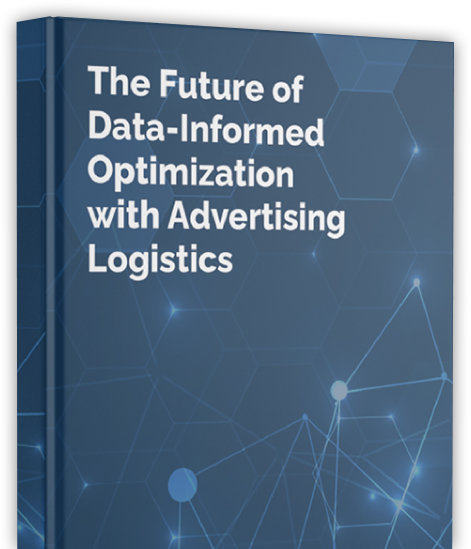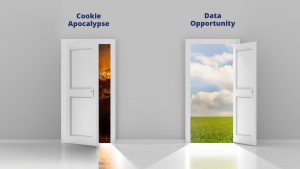Description
There was a period of time when people thought sites like Napster and Kazaa were going to be the future of music. Many forward-thinking people feel programmatic advertising is just entering the Slope of Enlightenment.
One of these people is our very own Stephen Johnston, and in this episode, we hear why we’re living in the digital dark. We also get insight into how his team is leading the charge for a more informed future.
Transcript
Tony Winders: Hello, and welcome back. I’m Tony Winders, and I’m here On The SPOT with Stephen Johnston, Founder and CTO of PubWise. Stephen, thanks for letting us put you On The SPOT one more time.
Stephen Johnston: Thanks, appreciate it.
Tony Winders: Today, we’re going to be talking about programmatic trends for 2022. It’s the time of year when we start to think about the way forward and I know you and the PubWise team are always half a step, if not a few years ahead of the curve. So I’m really eager to hear your thoughts on where the industry is headed in 2022. I know so much change is happening and as it always does in the publisher technology world. So I’d love to hear your high level, kind of what are you seeing for the year ahead?
Stephen Johnston: Sure. I think if we wanted to start to talk about trends, as they go forward and interpret these into multiple levels, the big one I see is, strategically, is around intermediation and we can put a whole lot of things into that bucket. But if you wanted one term, it’s what is the nature of all of the people attached to the supply chain for digital programmatic advertising. And some of these things are real basic, or they’re real obvious and heavily talked about. Identity, ads.txt, supply chain. But, those things have been sort of top down pushed. And I think that, from the buy side, we’re going to start to see more push up from the publisher side. When you look at intermediation, it’s how are we sharing data through that? How are we exploiting data through that? How are we doing identity? How are we proving value of the players that we interact with? And importantly, for what we’re doing, how do you test it? Right? It’s a dynamic industry, I think a lot of techniques and a lot of approaches get you this fixed point in time answer. And that’s a major failing, because things change. So, I’m excited about opportunities to react to market changes and things that they go forward and do things that on board, and how you do all those things around intermediation or intermediaries in a dynamic, ongoing basis.
Tony Winders: So I would love to dive into some of those individually, for example, the more pushing up from the publisher side, as opposed to top down from the buyer side. What do you mean by that? That sounds like an interesting trend.
Stephen Johnston: I mean, the buy side says, we want to make sure that we’re selling this through the channel that we agreed, right? And it’s an anti-fraud measure, it’s a counting measure, it’s an accountability measure, it’s a whole bunch of reasons for it. But fundamentally, ads.tech says, this place, this URL expects these things to be bought through these channels and knows about that. And there are similar things coming from the publisher side, really, which is a buyer’s version of it, to say that the other side expects to be buying it. And ultimately, closing that loop in both directions is part of getting visibility into the whole supply chain so that you start to ask the critical questions about the value in each of them. So when you look at the cluster of things, ads.text, sellers.json, buyers.json and the similar and then supply chain or s chain as we call it, in certain parts. They’re all really related to giving you a supply chain receipt. Anytime anything in programmatic is asymmetric, I think there’s an opportunity for someone to be, maybe gaining in proper leverage. So I’m happy, really happy to see that becoming bi-directional. And then long term, I think it’ll facilitate all the things we want to do around creating value.
Tony Winders: What’s the practical expression of that? I mean, is there the possibility of an actual supply chain receipt? Or, are you talking theoretically?
Stephen Johnston: We see it. So, we actually see it in the bidstream, there is literally a supply chain receipt at least one end of it. Right now, it works its way upwards and it should work its way back down in the responses and things of that nature when we get to the buyer corollary. So yes, we see it, it’s a dynamic thing, it’s evolving. How much do we see it at any given time? It’s like, I want to do everything we can to make sure that we get more of that information.
Tony Winders: Yeah, with so much data flowing through, I wonder how the most salient information percolates up to the top? And so that it can be manageable and I’m sure you have an answer for that.
Stephen Johnston: So, fundamentally, the industry moved previously, and you saw just in general, all this conversation about big data, right, big data, big data, big data, and then you saw the following conversations, well, it’s great to have a lot of data, have you gained any insight? Have you gained any knowledge? Have you gained any wisdom? I got a pile of data. Right? So this is a trend, I think we’re going to see more in advertising, there’s a larger trend around data through something called reverse ETL. And it’s something we’re going to, in 2022, embrace pretty heavily and it’s the concept that we shouldn’t be pushing large datasets around the world, right? What we should be doing is defining what we need out of those datasets, and then giving the dataset to the person who can use it. We collect terabytes of data every month and for some of our bigger customers, we collect terabytes of data every month. It doesn’t make a whole lot of sense to say, “oh, we’re your data partner, here’s a terabyte of data, have fun”. And it doesn’t make a whole lot of sense for us to work with them to say, well, we’re going to give it all to you and then define some fields and whatever, we have the systems in house to be that reporting partner, to work with them and create the dataset they need, and then just give them the thing that’s useful for their internal systems. What that gives them, because I know some people will look at that and go, okay, so now you’re bottling it up. What it lets us do is gain responsiveness. So since you’re dealing with a source system, and you’re not dealing with moving all this data around, it takes hours and then waiting for another process, then you can now be more responsive, you can get that data hourly, or you can get it intraday, instead of doing overnight kind of processing or pushing a lot of data around weighing any of these insights. So that’s the value that the consumer gets is more responsiveness out of it. Ultimately, they get cleaner data, better data, better defined data, and more accuracy that the interpretation of an individual part of that data is consistent across multiple consumers. It gets into 100 things I can talk an hour about.
Tony Winders: Something else you said at the top was about intermediation and disintermediation. I mean, it seems like we’ve talked about the middleman and the ad tax and all this kind of stuff that goes on between the advertiser spending a dollar and the publisher earning half of that. Is the trend toward more disintermediation or intermediation? What did you mean by that?
Stephen Johnston: Well, I’m not sure precisely that it’s someone helping you accomplish the goals that is the problem. Right? The industry over the last few years has sort of vilified the idea that you’re paying someone to help you. We pay people to help us across all elements of industry, any consultant you ever paid is being paid and can be thought of as taking the fee, right? You could calculate your phone bill, affect your business and then calculate it as a percentage of profit, right? So the idea that someone’s taking a percentage on the thing you’re doing is not inherently bad, anything can be calculated that way. The issue is, can they prove their value? And a huge number of the people participating in advertising now, I don’t believe can. Now that may partly be a reporting and a data problem. And it may be a reality problem. But until you get the system observable enough to tell the difference, you’re just guessing. And so, we’re taking that as our mission and have been, I mean, when we look at what we built on the pre-bid side, we track every event in pre-bid down to the event level, like, we can recreate an event, and tell you everything that happened, every bidder that bid, when they bid, how long it took them, the amount, we have it all, none of it, pre summarized and squeezed out, all the juice is there. And so we’re taking that all the way up the supply chain. And our intent is not to bottle that up and be an intermediary between you and that, but to provide the insight to use that to determine who’s providing value as a partner for you. That’s basically been our mission all along and we’re expanding that further down the supply chain.
Tony Winders: Another thing you talked about, at the outset, was the idea of fixed point in time being a point of failure, versus, I presume you meant the use of technology to kind of understand programmatic performance over time, can you talk a little bit about what that might be in terms of a trend?
Stephen Johnston: Yeah, so machine learning applications across business have largely been sort of point in time approaches, there’s so much data, it takes so long to build a system, it takes a while to operationalize it. And then, take it back to more sort of pedestrian kind of things, you go to your team and say evaluate, for the US, for some period of time, come back for a recommendation. So, somebody spends X hours a day, making changes, observing results, they spend some amount of time reporting on it. And when they’re done, they’ve got some answer. And typically, we should change this to X, Y, or Z. That answer is decaying. I mean, it’s immediately rotting, because things change and you may have a little bit better insight, you may have a little bit better number that you did a month ago, but it’s going to change. And so, we have the ability to leverage systems where we’re using both just traditional is this number bigger than another, and more advanced machine learning, progression, statistical analysis, and all these things, very high rates, very consistent. We can look at the amount of decay, we can measure a response. But you’ve got to have a system that’s instrumented, that’s observable, that’s controllable, that you can see what’s going on, see how systems are responding, see what’s going back through and you can then immediately enact what you’ve learned from that. And so that’s what I’m talking about when talking about sort of point in time answers, go find out what this should be based on data last week, you know that last week thing should be a constant sliding window. It’s more complex than that. But if you’re not doing that, then you just have something whose value’s kind of deteriorating?
Tony Winders: Is that a trend that the whole industry will see in 2022? Or technology?
Stephen Johnston: I think it’s a technical trend, in general, the ability to sort of leverage machine learning platforms that facilitate some of this. Ultimately, it’s great to be able to turn up a machine learning model and do some things. But if you can’t then take the learning and plug it into your optimization system then what are you going to do and that’s an area where we have patents recently allowed in. And I don’t think that that capability exists from the industry.
Tony Winders: So if I could try to recap the trends that you’re seeing in programmatic for 2022. It’s the bi-directional sharing of data and accountability from both the buy side down and the sell side up, also known as transparency, observability, perhaps, that’d be one takeaway that I have. Another one would be that intermediaries aren’t necessarily bad for the fees they take as long as they add value, and maybe teasing that out, actually, the trend should I suggest will eliminate players that aren’t proving their value. Would that be fair? And my third takeaway is the technical trends that we just spoke about, which is that a snapshot in time, which is a historic kind of machine learning discipline, is evolving in becoming more advanced where the consideration of future state is more readily accounted for in the algorithms.
Stephen Johnston: Yeah, the algorithms and the processes. Yeah. Yeah, and summing up, sort of into 2022 you would layer on top of that, and things that I think you hear a lot, identities going to be big, cookies are going to be big. And, we’ve got limited time so to me, rehashing those, I think those are really out in the industry right now. But identity is going to be huge. The cookie apocalypse is going to be huge, but what are we going to do to deal with those things? Those are the trends that I wanted to focus on here. That’s what gets us beyond those things that are going to be a very real reality.
Tony Winders: I liked your comment before about the cookie opportunity as opposed to the cookie apocalypse. And I think, potentially, that’s….
Stephen Johnston: Here’s how we turn that into cookie opportunities. Let’s start digging into this, let’s start getting better algorithms, getting better applications, more data. Everybody that comes to you says they have a solution, that they have a cookie opportunity, how do you measure? That’s the platform that we’re going to be building. And that’s what I see as a trend.
Tony Winders: So, very good. Well, we’ll leave it there today. Thanks for letting me put you On The SPOT Once again. This is Tony Winders with Stephen Johnston, Founder and CTO of PubWise, appreciate the time and look forward to our next On The SPOT.
Stephen Johnston: Thanks.





